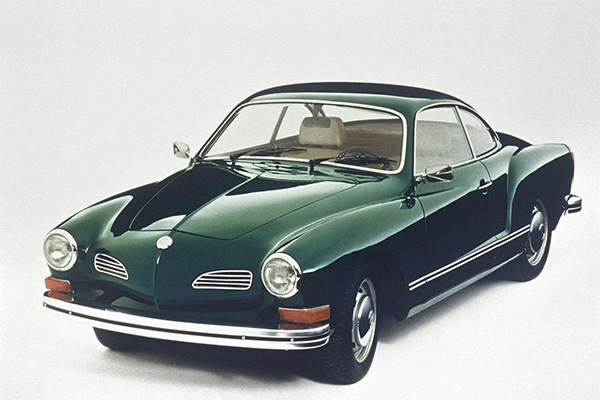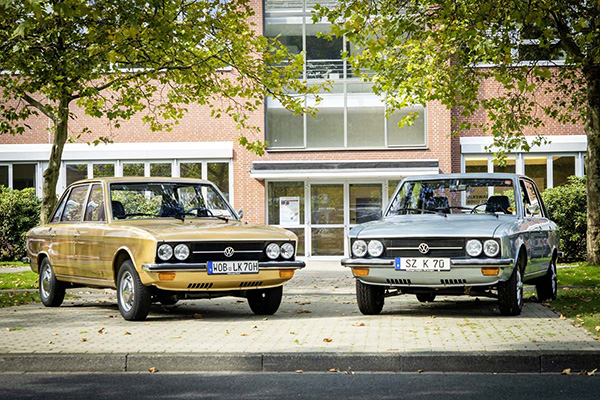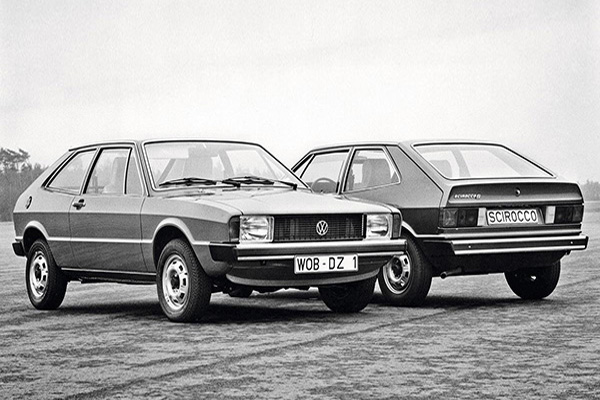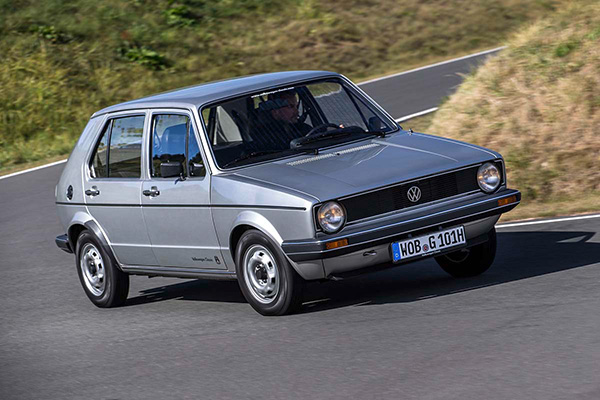Why 1974 was VW’s best year
There are plenty of key dates in the history of Volkswagen, but arguably the pivotal moment for the German company came in 1974. This year marks the point where it went from being a builder of gently ageing air-cooled cars to the manufacturer we know today.

Fifty years ago, the majority of VW’s range was based on the Beetle and various takes on this rear-engined, air-cooled machine that had changed the world. Of course, the Beetle still had plenty of production life left in it in 1974, but times were changing. The delightful Karmann Ghia reached the end of its road in 1974, as did the 412. The 1600 fastback and Variant had both ceased production the year before, while Volkswagen’s first front-engined car, the K70, only had one more year left to run before it too was deleted from the brochure in 1975.

As a result, 1974 saw a changing of the guard with the arrival of not one but two cars that would shape Volkswagen for evermore. The most important was the Golf, but it was the elegant and sharply styled Scirocco coupe that arrived first and a good six months before its hatchback sibling.

There was a connection between the Scirocco and the Karmann-Ghia, and not just because they were both coupes. The Scirocco was built by Karmann, giving it a legitimate claim to be the successor to the stylish Karmann-Ghia. However, where the earlier coupe had been very much style over substance, the Scirocco took both sides of the equation seriously.
A front-wheel drive platform bucked the usual thinking for sporty coupes. While Ford and Vauxhall/Opel stick determinedly to rear-wheel drive, and the Audi Quattro with four-wheel drive was still some six years in the future, there wasn’t much else like the Scirocco. Depending on which country you lived in, the Scirocco could be ordered with engines as small in capacity as 1.1-, 1.2- and 1.5-litres. However, it was the 1.6- and 1.8-litre motors that buyers wanted. The 1.5 offered decent performance for the period, but it was when the Scirocco received the same 110bhp 1.6-litre engine as the new hot hatch Golf GTI that it showed its full potential. It handled superbly and 0-60mph in 8.5 seconds coupled to a 115mph top speed put it right up there alongside a Ford Capri 3.0 V6 for pace.

Volkswagen was delighted with the headlines the Scirocco generated and it showed the German firm had truly moved on from being a company that only really built variations on the Beetle. However, the Scirocco was also a very useful car in a way that VW kept quiet about. By launching the coupe half a year ahead of the Golf, VW had the opportunity to see how its new front-drive platform would get on in the real world.

Would buyers accept a small VW with front-wheel drive and transverse front engine? Would any problems come to light that had not been spotted during development? The only small gripe came from the UK and other right-hand drive markets as the Scirocco was not built as a right-hooker until 1979. As it turned out, though, VW needn’t have worried as the new coupe and its Golf-derived underpinnings were very good indeed and sold in big numbers.
This meant when Volkswagen launched the new Golf in mid-1974, it was a model even the company could anticipate with relish. There would be greater scrutiny of the Golf hatch as it was a mainstream car where customers would not be as forgiving as they would of a sporty coupe and its inherent flaws with practicality. The Golf had to be absolutely right, and it was.
Where most of its competition still used a rear-wheel drive layout that robbed rear seat and boot space, the Golf’s front-drive design freed up generous quantities of room for people and luggage. The VW was also a hatchback right from the outset when, amazingly, some of its competitors were only offered as a saloon or with a boot unless you chose an estate version. The Austin Allegro had arrived the year before and was a natural and direct rival to the Golf, yet it had a boot despite its sloping rear end being a natural style for a hatch.
All of this led to the Golf flying out of showrooms, and also literally out of the sky when VW advertised its Golf very cleverly. By comparing it with a Japanese small car, which had become a byword for reliability in the face of British car’s dismal record on this front, the Golf founded a reputation for solidity that lasts to the current day.
Still in the pipeline in 1974 was the ultimate Golf model, the GTI, which arrived in 1975. Like the Scirocco, it took a while to be sold with right-hand drive, but that did nothing to stem its popularity. Also slated for launch in 1975 was the Polo that was, in almost every way, a scaled-down Golf.

A year before the Golf’s launch, Volkswagen had also put in place that other supporting column of its future growth, the Passat. Like the Golf in the small hatch sector, the Passat was a revelation in the family car class and went on to sell more than 1.7 million of this first-generation model. VW also shifted half a million Scirocco Mk1s up to 1981 and around 10 million Golf Mk1s. That included 462,000 Mk1 GTIs, which shows how key the hot hatch was to establishing VW and what a pivotal year 1974 proved to be.
What's your favourite Volkswagen from 1974? Do you own one? Let us know in the comments below!

COMMENT